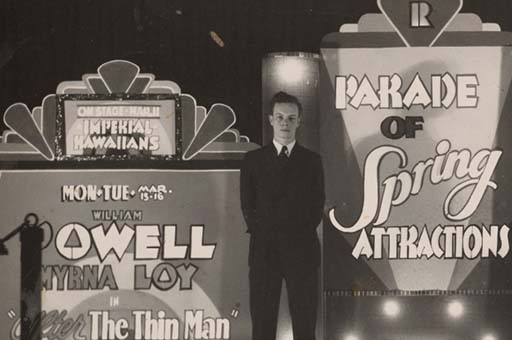In 2020, the Digital Library of Georgia partnered with the Rylander Theatre, providing $7500 worth of services as part of its collaborative digitization grant program. Together, they built and described Rylander Theatre Special Collections, a digital collection covering the theater’s “first life” spanning 1921-1957. The collection includes rare photographs of the building and the small businesses in its Americus business neighborhood, as well as membership cards, numerous souvenir programs, theater posters, coupon books, fliers, and handbills.
Jacob A. Ross, a park ranger at the Jimmy Carter National Historical Park in Plains, Georgia, notes:
“I consider the Rylander Theatre’s history to be part of President Carter’s history, as the young Carter would often attend shows at the theatre during the same era these items were created.”
United States presidents have often intermingled with motion picture culture throughout history. Former presidential appearances in Hollywood films include Donald Trump’s cameo in Home Alone 2 (1992), Bill Clinton in First Kid (1996), or the actor-turned-politician Ronald Reagan’s performances in Alice in Movieland (1940) and It’s a Great Feeling (1949). However, former president Jimmy Carter holds the crown for the most movies watched at the White House Family Theater, with 480 films seen during his 4-year term.
Carter, now 97, served as the United States’ president from 1977 to 1981. Before being elected president, Carter served in the U.S. Navy under Admiral Hyman Rickover, who led the U.S. nuclear submarine program; two terms in the Georgia Senate (1963-1967, pp. 382-383 of PDF); and one term as Georgia’s governor (1971-1975, pp. 27-28 of PDF). Defeated by Ronald Reagan in the 1980 presidential election, in 1982, Carter and former first lady Rosalynn Carter established the Carter Center, a non-partisan public policy organization.
Away from the high-stakes environment of Carter’s numerous careers, his secret love for movies was born in Americus, Georgia’s Rylander Theatre. After leaving his childhood town of Plains, Carter attended Georgia Southwestern College (later renamed Georgia Southwestern State University) in Americus, where he found the historic theater and soon became its most celebrated patron.
During his college years, Carter would often attend the Rylander Theatre’s movie screenings since it was one of the first establishments to show “talkies,” or movies with sound, that had transitioned from silent film between 1926-1930. These films, shown during the theater’s “first life” (1921-1951), were part of a program that included musicals, vaudeville shows, and silent films. Many advertisements for these events are available in historical issues of the Americus Times-Recorder in the Digital Library of Georgia’s Georgia Historic Newspapers portal and digitized through the National Digital Newspaper Program.
Carter’s passion for cinema grew during his term in the Oval Office. As a result, the genre or meaning behind a specific movie he watched would often coincide with key events during his presidency.
Some movies that President Carter watched during his term in office (with links to his diary entries on those days):
- Rocky (1976) – February 19, 1977
- The Godfather (1972) – March 3, 1977
- Jaws (1975) – July 22, 1977
- 2001: A Space Odyssey – September 4, 1977
- Frankenstein (1931) – October 19, 1977
- Goodbye Columbus (1969) – November 22, 1977
- Citizen Kane (1941) – December 3, 1977
- King Kong (1976) – January 31, 1978
- Star Wars (1977) – February 4, 1978
- To Kill a Mockingbird (1962) – May 27, 1978
- The Life of Emile Zola – June 7, 1978
- The In-Laws (1979) – July 23, 1979
- The Lost Horizon (1937) – September 15, 1979
Thanks to Carter’s presidential daily diary, we can see that he and First Lady Rosalynn Carter viewed Star Wars (1977) on February 4, 1978, accompanied by Anwar and Jehan Sadat, the president and first lady of Egypt. This viewing coincided with one of the numerous visits from the Sadats throughout Carter’s presidency. Discussions from this February visit grew into the Camp David Accords in September of 1978, when Carter brokered a peace deal between Sadat and Israeli Prime Minister Menachem Begin. Whether or not the screening of Star Wars had an impact on the peace treaty is unknown, but conspiracy theorists have had fun imagining so over the years.
Another intriguing relationship from Carter’s watchlist includes viewing The Life of Emile Zola, a movie about the Nazi invasion of France during WWII (June 7, 1978). He watched this film on the same day he delivered a graduation speech at the United States Naval Academy in Annapolis, Maryland, emphasizing the importance of human rights in foreign policy.
The former president also viewed Frank Capra’s The Lost Horizon (1937) on September 15, 1979, one day after his approval ratings dropped to the lowest point for any president in three decades. On the same day, he fainted during a 10K road race. The Lost Horizon, a drama about a group of plane crash survivors who land in the remote Himalayas, likely served as an escape for Carter during the troubling times of his term.
The Rylander Theatre was established by Arthur Rylander and his son, Walter, in 1921, initially as a city-civil collaborative project. The Rylander family then brought in New York architect C. K. Howell to design the magnificent edifice, said to be “a prime example of eclectic architecture restored to its former glory” (Anderson, 2003).
As the 1950s began, The Rylander Theatre had already started to see the end of the business as they knew it. A new and larger theater, namely The Martin Theatre, began pulling in the business of Rylander’s market and even started taking major movie releases, relegating Rylander to “B-grade” movie screenings. As of 1951, the Rylander Theatre was closed for business indefinitely.
Its doors would remain closed until the city of Americus, Georgia, Governor Roy Barnes, and other foundations and private donors managed to raise 4.8 million dollars in funding to restore the building. Then, reopening on President Carter’s birthday, October 1, 1999, along with an auditorium (the Jimmy Carter Auditorium) named after the former president, the “finest playhouse south of Atlanta” began anew. The meticulous renovations were rewarded with a 2000 Preservation Award from the Georgia Trust for Historic Preservation.
Since reopening, the Rylander Theatre has offered live performances, musicals, and organ concerts on its 1928 Möller Deluxe Theatre Pipe Organ (one of only three in the state), movies, community theater, as well as other events throughout the year.
Like many other small businesses, the COVID-19 pandemic impacted the theater significantly, causing financial hardships and resulting in the theater’s closing its doors for an entire 13-month period, spanning from March 2020 to April 2021. Thankfully, since then, the theater has reopened for weekly programming.
Recommended Resources
- Rylander Theatre Special Collections (Rylander Theatre)
- Articles and advertisements about the Rylander Theatre in Georgia Historic Newspapers (Georgia Newspaper Project, Digital Library of Georgia)
- President Jimmy Carter Daily Diary (Jimmy Carter Library)
- Notable Events and Accomplishments of the Jimmy Carter Presidential Administration, 1977-1981 (Jimmy Carter Library)
- Presidential Files, Office of the Staff Secretary (Jimmy Carter Library)
- Georgia Official and Statistical Register (University of Georgia Libraries, Georgia Archives)
- Jimmy Carter: Key Events (University of Virginia Miller Center)
- Rylander Theatre website. (Rylander Theatre)
- “Every Single Movie That Jimmy Carter Watched at the White House” (Gizmodo)
- “Jimmy Carter” in the New Georgia Encyclopedia
- “It’s Curtain Time Soon at Historic Rylander Theatre (Americus Times-Recorder)
- American Theatre Organ Society – Atlanta Chapter: “The Rylander Theater’s Möller Organ” (American Theatre Organ Society)
- “Americus” in the New Georgia Encyclopedia
- Georgia Trust for Historic Preservation (Georgia Trust for Historic Preservation)
- “7 Fun Facts About the White House Movie Theater” (Mental Floss)
Related Images:
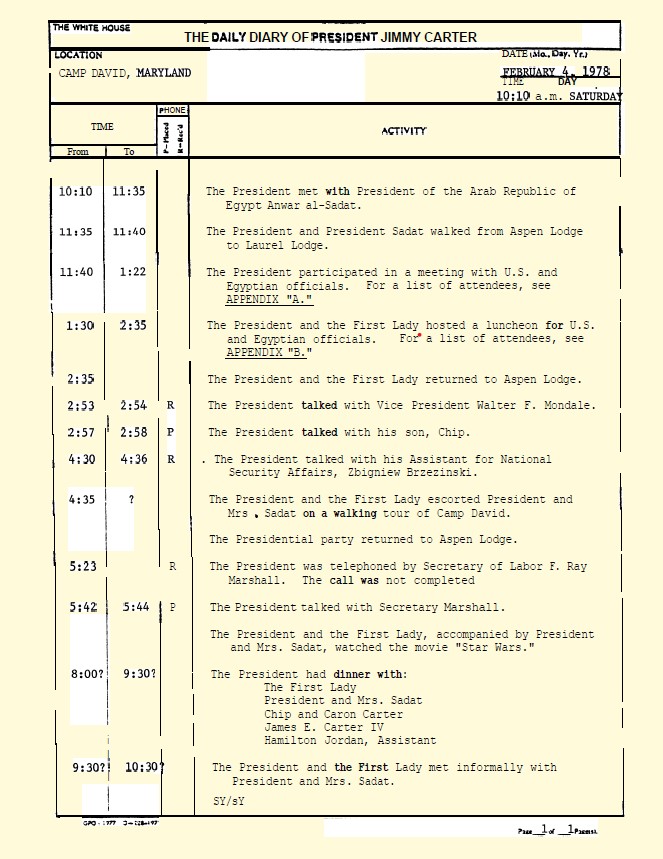
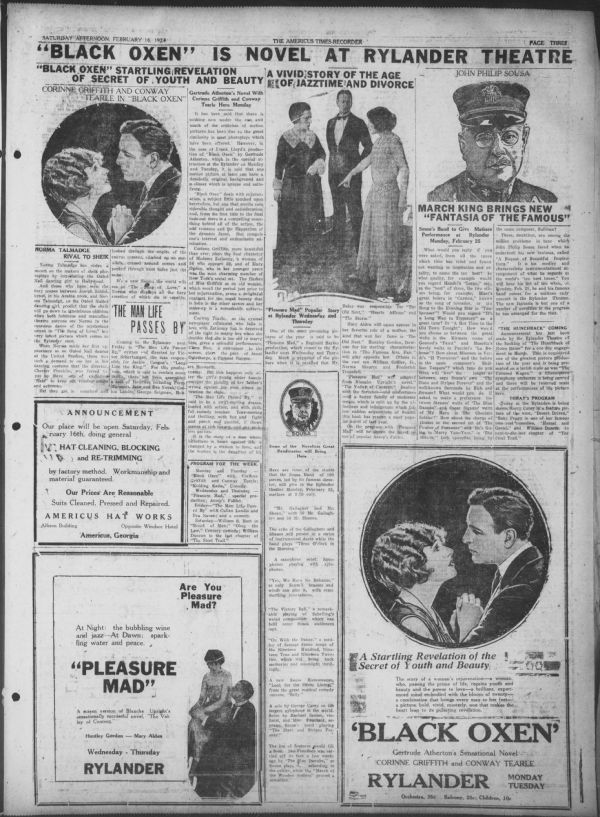
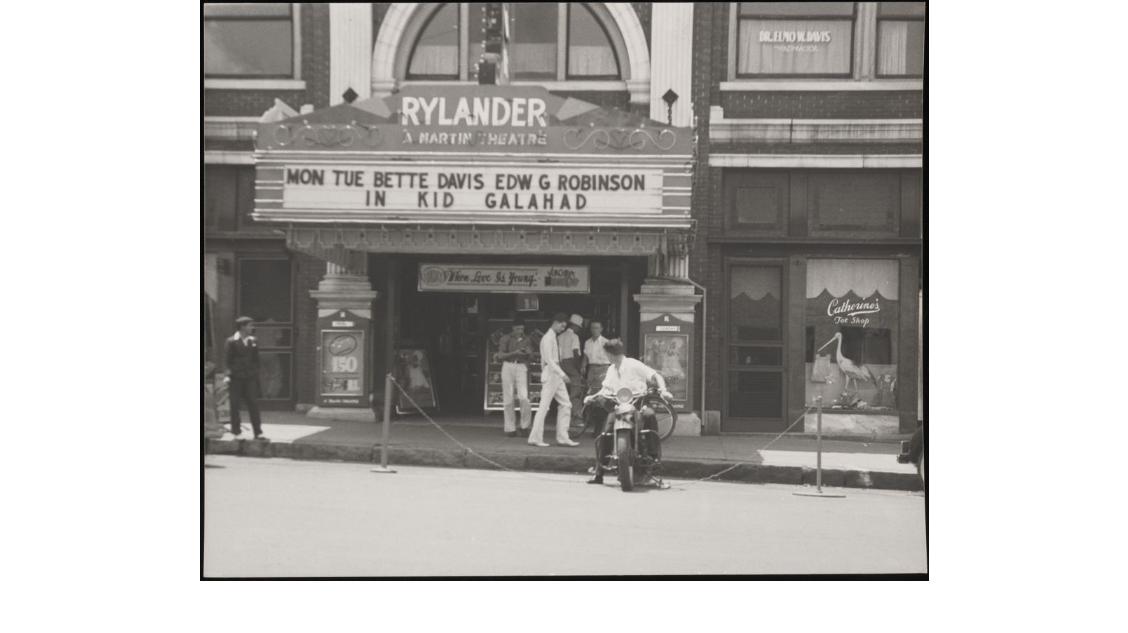
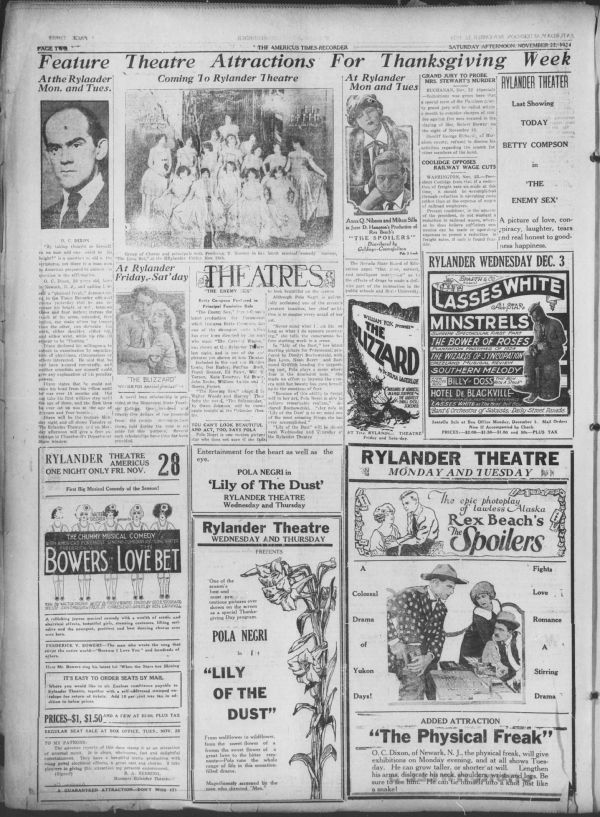
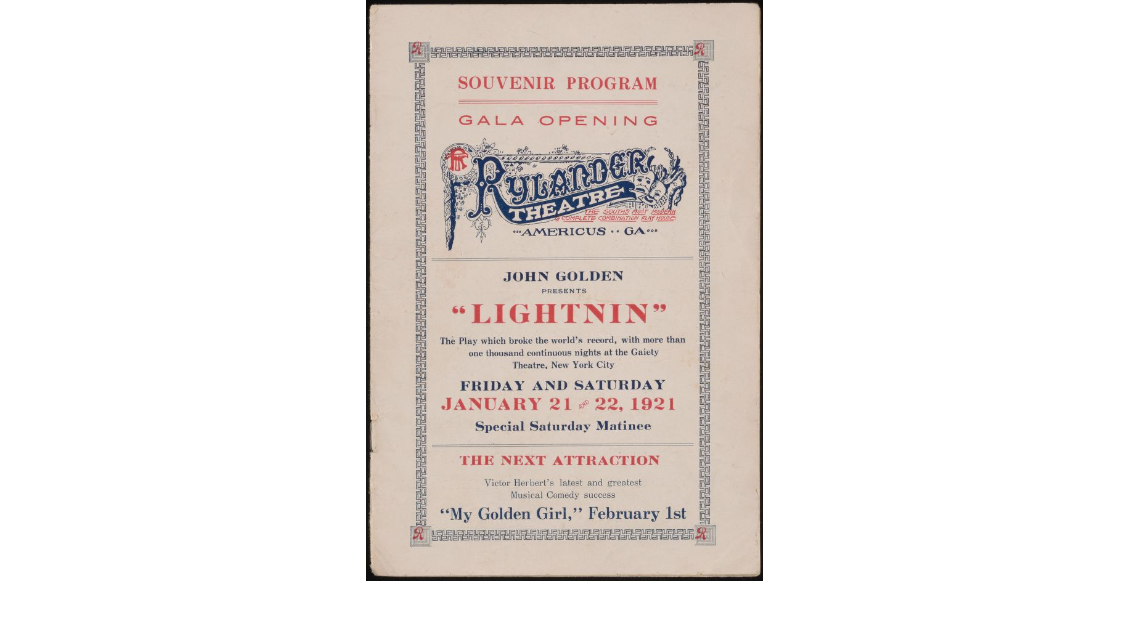


![A black-and-white photo of the facade of the Rylander Theatre in Americus, Georgia. The marquee reads "Mon Tue Bette Davis Edw[ard] G. Robinson in Kid Galahad." A young man sits on top of a motorcycle as he looks back at the theater, and pedestrians walk along the sidewalk in front of the theater.](https://blog.dlg.galileo.usg.edu/wp-content/uploads/2022/01/ryl_rtsc_rtsc18-rylander-theatre-street-view.jpg)
